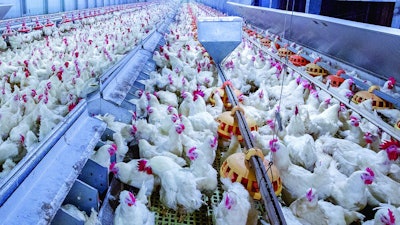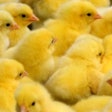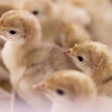
Proper management of broiler breeder health is a delicate balance. It involves providing the correct nutrients and water, at the correct times, and in the necessary quantities to every bird in the flock throughout the flocks’ life.
Leg health, in particular, is critical to maintaining the welfare and production of each broiler breeder. Consider the following to manage leg health issues in broiler breeder flocks.
Monitor leg health closely
The most effective method of monitoring leg health is to record the number of birds culled due to leg issues.
Train personnel to accurately identify and record the basic types of leg problems and to understand when leg culls are rising above normal levels. Sudden increases in leg cull levels should trigger an investigation into the cause.
Consider infectious, non-infectious causes
When evaluating leg health problems, consider both infectious and non-infectious causes.
Although Staphylococci bacteria are normal commensal bacteria in chickens, under the wrong conditions they are opportunistic pathogens and may cause joint, tendon and bone infections. Monitor for high levels of bacteria, injuries that might allow bacteria a route of entry, and conditions that cause birds to become immunosuppressed or distressed.
Many non-infectious causes of leg health issues, such as bumblefoot and foot pad dermatitis, can often be controlled by good house management. Other reasons, such as ruptured tendons, may also have genetic variables.
Optimize gut health
Anything that reduces gut integrity or impairs gut development will result in reduced nutrient absorption. Without the proper nutrients, birds are pre-disposed to leg health problems in production.
Ensure that diseases such as coccidiosis are not reducing a bird’s ability to digest food.
Maintaining a calm environment will also aid gut integrity and nutrient absorption.
Closely manage feed during rearing
Without proper nutrients, early development will be impaired, and the risk of leg health issues in production will increase.
Since feed is restricted for broiler breeders, management is especially important, and dietary nutrient levels recommended by parent stock company should be followed.
Allocate feed to achieve, or slightly exceed, target body weights; do not allow birds to fall below target weight. Increase feed allocations at least weekly. Keep the weekly weight gains on target even if birds are overweight.
Uniformity of body weight throughout a flock is also important. Grade at four weeks of age to determine whether adjustments are needed to improve uniformity.
Ensure all birds have good access to feed, water
In order to obtain proper nutrition, birds must be able to reach feed and water. Ensure birds have adequate space at the feeders and drinkers, and the feeders and drinkers are positioned far enough apart. Follow equipment manufacturer and parent company management guidelines for spacing recommendations for each system, and modify space requirements over time as birds get older and bigger.
Monitor birds closely at feeding time. If they are still looking for feed five minutes after feeding, make adjustments to increase feeder space.
Distribute feed evenly and quickly to the whole flock. Monitor feed depth, distribution time and clean up time regularly throughout the house.

Manage nutrition closely
Dietary levels of amino acids, calcium, phosphorus and electrolyte balance are all important for correct leg development.
Routinely collect feed samples and analyze for actual nutrient content. Some impacts of deficiencies include:
- Improper electrolyte balance can increase litter moisture.
- Lack of vitamin D3 can cause rickets.
- When laying hens have a calcium deficiency, they will redirect calcium from bones to eggs, resulting in bones that are too thin to support the weight of the bird.
Litter management
Good litter management and litter quality are essential for minimizing leg health issues, such as foot pad dermatitis. Keep litter dry and friable by:
- Maintaining correct house temperatures;
- Ensuring the floor is completely dry before spreading litter;
- Using proper ventilation to provide sufficient fresh air, remove excess moisture and minimize drafts;
- Keeping relative humidity at less than 60% whenever possible; and
- Ensuring drinkers are well maintained and do not leak, adjusting drinker height daily, and monitoring that drinker lines are level.
Manage slats height and area
Slats that are too high will lead to increased leg health issues. When slat height increased from 25 to 60 cm, mortality due to leg problems almost doubled. In addition, slat area should not be greater than 30% of floor space to reduce risk of leg health issues such as bumblefoot.
Introduce perches during rear
Installing perches during rear encourages and trains females to jump on slats in lay. Jumping onto perches also promotes good leg strength. Place perches in female rearing pens starting at 28 days of age.
Monitor incubation conditions
Chicks hatched from floor eggs show higher incidences of femoral head necrosis due to Staphylococcus aureus. Either do not set floor eggs or segregate them into separate incubators and fumigate with formaldehyde before eggs are set and during the hatching process.
In addition, temperature and oxygen extremes during incubation can alter the weight or length of leg bones or cause asymmetry between legs. Ensure hatchery conditions are properly managed.

















